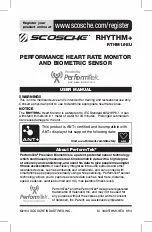
22
23
NOTE:
Each chemistry has default settings for the CHARGE values
of CHARGE V and TAPER CURR. In certain circumstances these
values may need to be changed when Charge Termination is not
being reached. IN ALL OTHER CASES DO NOT CHANGE THESE
VALUES. Changing the PEUKERT Value will not effect Charge
Termination, only TIME REMAINING Calculations. See Appendix
“
Changing Charge Terminiation Values
Menu Option
Description
CHARGE V
CHARGE VOLTAGE - Used in conjunction with
Taper Current to determine when full charge
has been reached. The measured voltage when
Taper Current is reached must be above the
threshold voltage calculated by CHARGE V -
300mv. On most chargers this happens at the
end of the absorption stage, before it switches
to FLOAT.
TAPER CURR
TAPER CURRENT - Used with the Charge
Current to determine when a full charge has
been reached. This is automatically scaled in
relation to the battery bank’s design capacity.
If modifying, it should be set to slightly higher
then the actual taper current (The current seen
the absorption sated ends), often about 2-4% of
the Full Charge capacity of the battery.
PEUKERT
PEUKERT QUOTIENT VALUE - The default value
for each chemistry should only be changed
if a different value is provided by the battery
manufacturer.
Faults and Alerts
Faults and Alerts
Alerts
Alerts are used to notify the user when a particular threshold on a param-
eter is passed. For instance, an alert can be set for when the State of
Charge exceeds 90%, but also when it drops below 50%. High and low
values can be set for most parameters. Alerts can also be disabled
entirely. For instance, most users won’t need an alert to signify when a
low current level is reached. The default for each alert is disabled.
Alerts can be set for the following conditions:
Alerts (User Defined)
Min/Max State of Charge (SoC%)
Min/Max Current (A)
Min/Max State of Health (SoH%)
Min/Max/Voltage (V)
Min/Max Aux-1 & Aux-2 Voltage (V)
Min/Max Mins Left (minutes)
Generally, Alerts are used to notify the user that a certain condition has
occurred, and are not only used to signify a problem. For instance, you
could set an alert on State of Charge, to let you know when a battery is
charged to a
specific point, so you can shut down a generator or other
charging device.
When an Alert occurs, the screen immediately displays a notification that
this has happened. Pressing the button will then show the parameter that
is being Alerted, the value reached, as well as the threshold that was set
for the value.





































